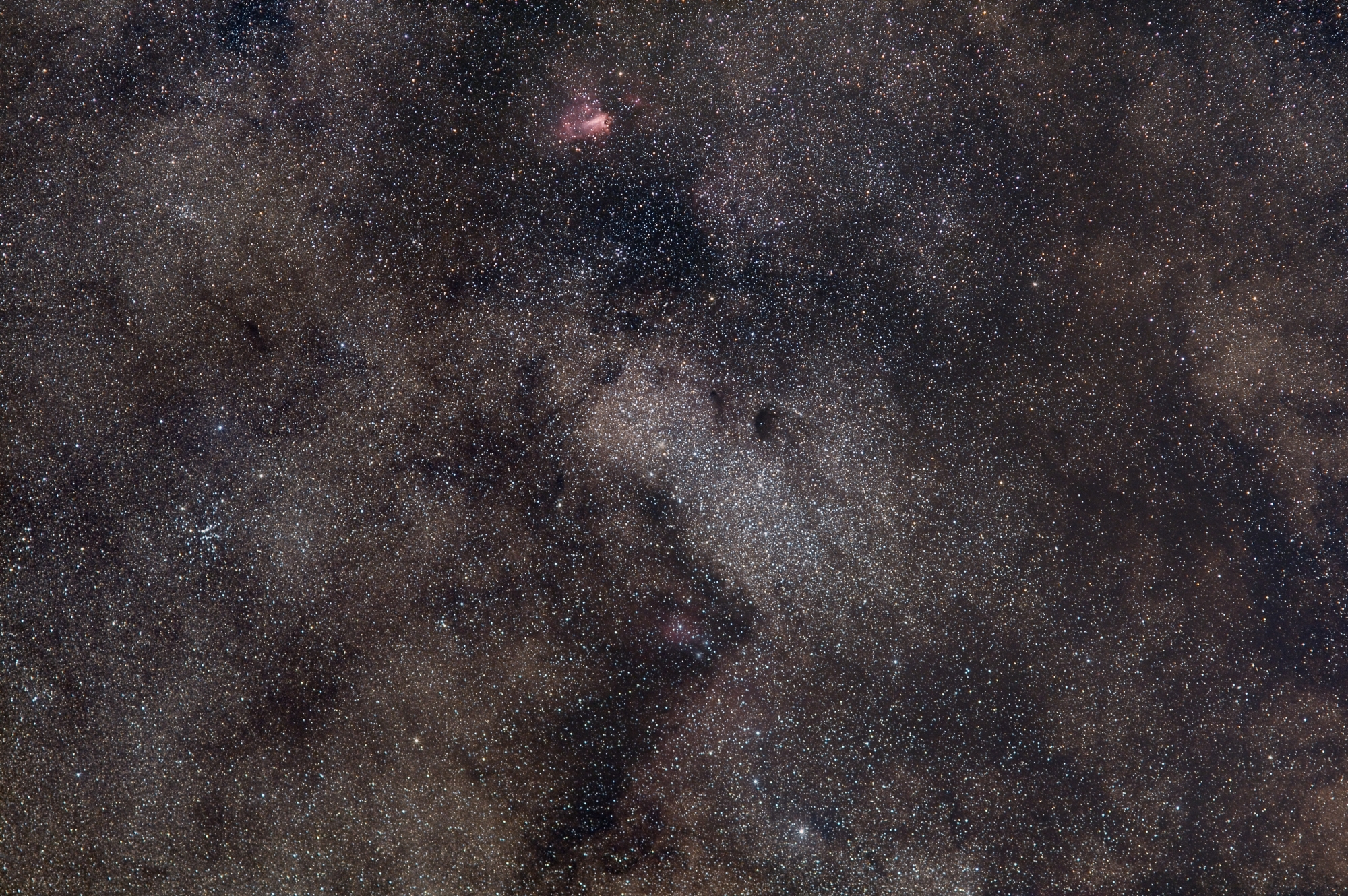
Move your mouse over the image above to get a version with constellation lines, deep-sky objects and labels drawn.
M24, the Small Sagittarius Star Cloud, seen at the center of this image, is one of the windows where our view towards the center of the Milky Way is less obscured by dust than elsewhere, we can see a huge star cloud in that chance tunnel in the interstellar dust. Interstellar dust dims or completely blocks the light of stars behind it. In fact, two of these patches of interstellar dust, called "dark nebulae", can be seen in the northwestern part of M24, they are designated Barnard 92 and Barnard 93. Clear windows through the Galaxy like M24 have great significance in the study of galactic structure, since they make it possible to study otherwise hidden, distant regions. It is of interest that the stars in the Small Sagittarius Star Cloud are slightly more blue-colored than in other galactic windows, this is probably due to a large population of young stars and less obscuration by reddening interstellar dust.
The red emission nebula on top is M17, the Omega Nebula. The slightly reddish patch just below M24 is another emission nebula designated IC 1283/84.
 Milkyway in Sagittarius, telelens photograph.
Milkyway in Sagittarius, telelens photograph.
 M17 - Omega Nebula, Wide Field, Wright-Newtonian photograph.
M17 - Omega Nebula, Wide Field, Wright-Newtonian photograph.
 M24 - Small Sagittarius Star Cloud, Wright-Newtonian photograph.
M24 - Small Sagittarius Star Cloud, Wright-Newtonian photograph.
 IC 1284 Region in Sagittarius, combined HαRGB image.
IC 1284 Region in Sagittarius, combined HαRGB image.
Exposure Data